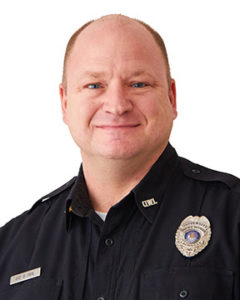Posted p.m. Thursday, Feb. 2, 2017

Police demonstrate how to use them Feb. 9 during Heart Health Month.
Police demonstrate how to use them Feb. 9, during Heart Health Month
Automatic external defibrillators have helped save five lives at UW-La Crosse in the last 15 years. The university is getting well equipped should another cardiac emergency arise. UWL installed 24 new AEDs throughout campus in January. The electronic devices are used to shock a heart back into a normal rhythm. A demonstration to make people more aware of how to use them is set for Thursday, Feb. 9, during American Heart Health Month. “I think sometimes people are afraid to use an AED,” says David Pehl, university police officer. “I want to show people how easy it is to use these devices.” Pehl will show people how to use a defibrillator from 9:30-10:30 a.m. Thursday, Feb. 9, on the first floor fireplace dining/lounge area of UWL’s new Student Union. [caption id="attachment_47919" align="alignleft" width="240"] Police Officer Dave Pehl.[/caption]
AEDs are not a “magic bullet” to saving someone’s life. Pehl says an immediate response, alerting emergency response teams and early CPR are crucial. Yet, he has personally witnessed the difference they make.
One of the most memorable incidents was in September 2013 when UWL faculty member David Phipps collapsed outside of his office and a co-worker began performing CPR. Pehl was the first to arrive at the scene with an AED.
“This incident had a good outcome,” says Pehl. “I don’t want to have an outcome where an AED could have helped save someone, but there wasn’t one available.”
Pehl says he was motivated to encourage campus officials to purchase more AEDs when he realized there wasn’t one in Centennial Hall, UWL’s largest academic building. Before the 24 new AEDs arrived, UWL had 14 defibrillators around campus; however, all were dated — some 15 years old.
The placement of the new AEDs and training on how to use them will make UWL safer and bring peace of mind, says Pehl. It will also move UWL closer to becoming a HeartSafe Community, a designation for communities that have gone above and beyond to ensure that steps are taken to respond to a cardiac event.
Pehl, an American Heart Association certified instructor, plans to have future training sessions on not only on the use of AEDs, but also on how to perform CPR and respond when someone is choking. Visit the Police Services website for updates in the future on training sessions.
Pehl’s demonstration will take place in the new Student Union, which has two AEDs. Others are in nearly every building on campus.
Defibrillators on campus are or soon will be located in:
Police Officer Dave Pehl.[/caption]
AEDs are not a “magic bullet” to saving someone’s life. Pehl says an immediate response, alerting emergency response teams and early CPR are crucial. Yet, he has personally witnessed the difference they make.
One of the most memorable incidents was in September 2013 when UWL faculty member David Phipps collapsed outside of his office and a co-worker began performing CPR. Pehl was the first to arrive at the scene with an AED.
“This incident had a good outcome,” says Pehl. “I don’t want to have an outcome where an AED could have helped save someone, but there wasn’t one available.”
Pehl says he was motivated to encourage campus officials to purchase more AEDs when he realized there wasn’t one in Centennial Hall, UWL’s largest academic building. Before the 24 new AEDs arrived, UWL had 14 defibrillators around campus; however, all were dated — some 15 years old.
The placement of the new AEDs and training on how to use them will make UWL safer and bring peace of mind, says Pehl. It will also move UWL closer to becoming a HeartSafe Community, a designation for communities that have gone above and beyond to ensure that steps are taken to respond to a cardiac event.
Pehl, an American Heart Association certified instructor, plans to have future training sessions on not only on the use of AEDs, but also on how to perform CPR and respond when someone is choking. Visit the Police Services website for updates in the future on training sessions.
Pehl’s demonstration will take place in the new Student Union, which has two AEDs. Others are in nearly every building on campus.
Defibrillators on campus are or soon will be located in:
- All residence halls
- Student Union, first and second floors
- Whitney Center
- Recreational Eagle Center
- Campus Child Center
- Roger Harring Stadium at Veterans Memorial Field Sports Complex
- Centennial Hall
- Center for the Arts
- Cleary Alumni & Friends Center
- Cowley Hall, first and third floors
- Health Science Center
- Graff Main Hall
- Physical Plant
- Mitchell Hall
- Morris Hall
- Murphy Library
- Wimberly Hall
- Wing Technology Center
- Wittich Hall
- Each squad car
